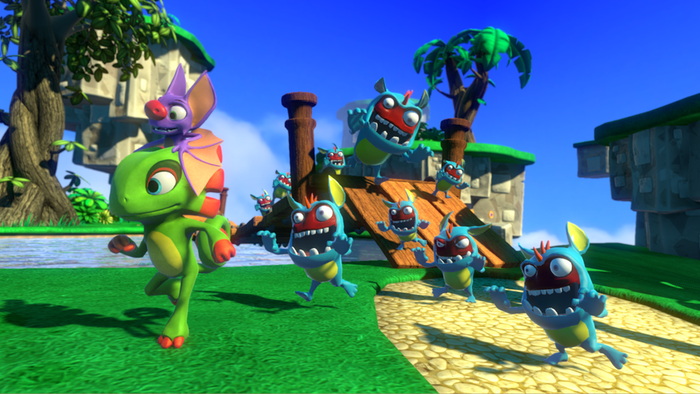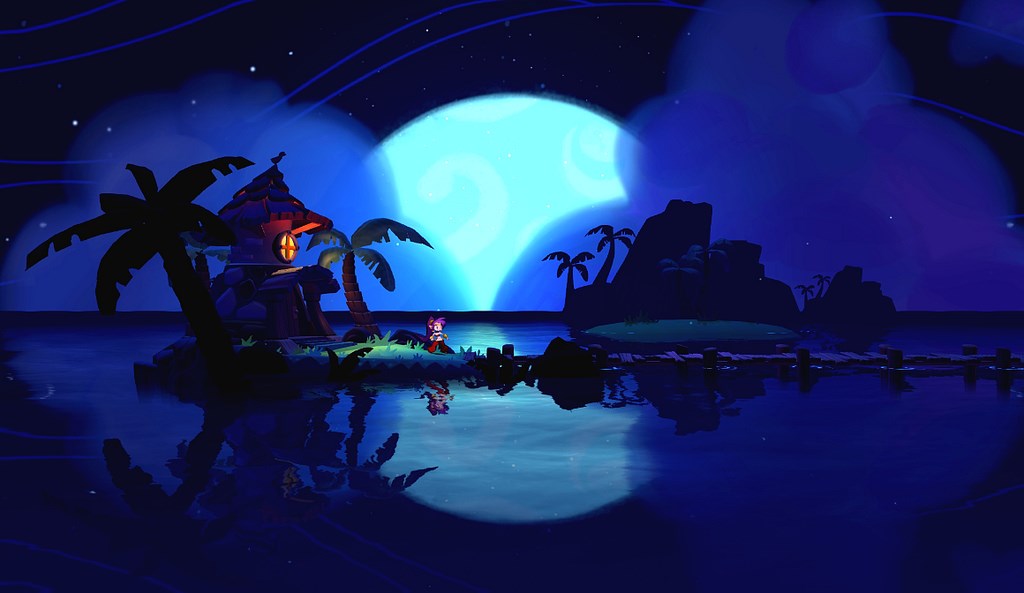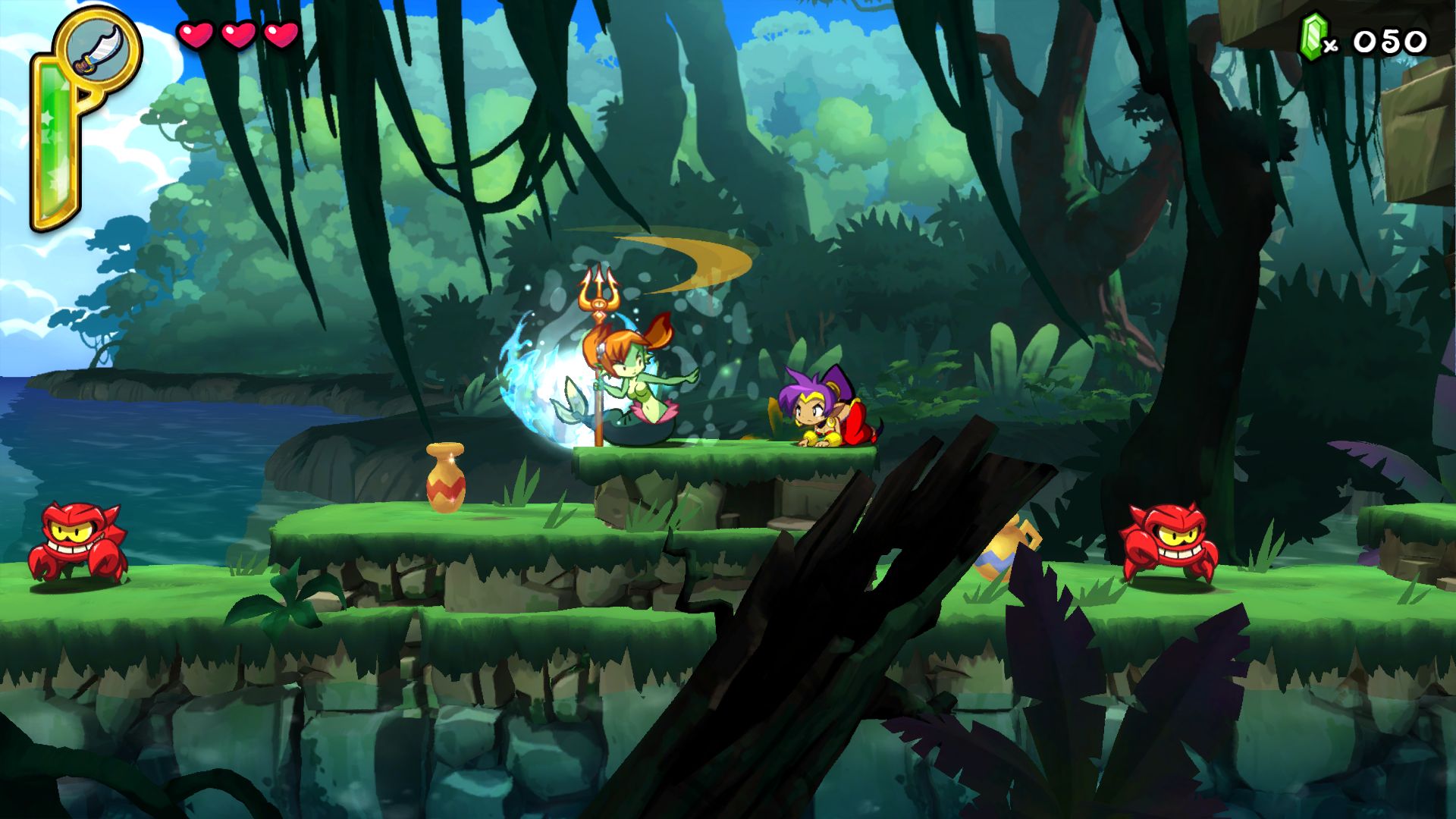2D platformers are all the rage these days, and nowhere is that more apparent than on Kickstarter. WayForward’s latest genie simulator Shantae Half Genie Hero is one of many examples. Others such as Shovel Knight, Freedom Planet, and Bloodstained are still only the tip of the paper-thin iceberg. Many view Kickstarter as little more than a perpetual nostalgia machine, and these games are a big reason why. They’re all call-backs to the games of yesteryear, many priding themselves on that fact.
Everyone remembers the 2D platformers which once ruled the day through colorful visuals and controller smashing difficulty. Many developers who grew up playing those games want to bring the genre back to prominence. Nostalgia has a definite cutoff point though. It runs through the games of late-80’s to the mid-90’s, where jump-heavy games are a two dimensional affair. That’s what’s in high demand on Kickstarter. Look for platformers resembling those from the late-90’s to mid-2000’s however, those of the 3D variety, and the well doesn’t dry up so much as it catches fire.
Nearly Extinct
We ran the numbers last year, and of the scant handful of 3D platformers on Kickstarter, a majority of them failed in spectacular fashion. The only successful campaigns came from the pioneers formerly at Rare, or by developers modeling their game after Rare’s old work. With nostalgia being at such a premium on Kickstarter, you have to wonder why that is. Why aren’t more developers trying to pitch 3D platformers on Kickstarter, and why aren’t more of them successful?
To find an answer, let’s take a look at the questions facing a developer looking to make a 3D platformer. The easiest way for a game to receive funding on Kickstarter is if it’s being pitched by a popular developer. If that’s the case, what better studio is there than WayForward? They have a large cult following – the sort of studio Kickstarter is for. They also have a popular series that could make a nice transition with Shantae.
Could you imagine a 3D Shantae game? Since its debut on the original Game Boy, Shantae has always had a sizeable cult following. It’s fans have gone to the ends of the Earth to support WayForward, even picking up the one time DSi exclusive Shantae: Risky’s Revenge. Seeing as how nobody owns a DSi, that’s dedication. Likewise, you get the impression WayForward makes all the licensed games they do for the sake of supporting the Shantae franchise, and their newer series Mighty Switch Force.
Crushing Reality
There would be many problems to solve with a 3D Shantae, just as there are for making any 3D platformer. How would the change the standard formula? Would 2D platforming fans be interested? Are there enough fans of 3D platforms to fund the game? Would Kickstarter be enough to cover the usually higher cost of a 3D game? Would they need to seek help from a publisher? How long would it take to make the game?
The question on most fans minds would be “what would the game be like?” For that, we can look to other popular 3D platformers. Yooka-Laylee is a great example, being the most recent high profile 3D platformer, but without it being out yet, it’s hard to say. Banjo-Kazooie, which Yooka-Laylee is modeled after, fits the Shantae mold perfectly. They both follow the same structure – backtracking through levels after having acquired new abilities that lets you access new areas in those levels, commonly referred to as Metroidvanias.
When you think about it, how the game plays is the easiest question to answer. Everything from the platforming, combat, and Shantae’s dance abilities could all easily make the transition into 3D. There’s even the perfect example of how to do so with Super Mario 64. The 3D debut of the Italian plumber didn’t feel like a 2D game awkwardly shoehorned into a 3D world, it felt like a traditional Mario game, like they were always 3D. Just simply do that, but with Shantae. See, how hard could it be? What could go wrong?
Dollars and Cents
Fans should instead be more worried about the same problem facing WayForward as any other developer, and that’s budget. The third dimension adds an immense price tag to any game, much less a game that requires a relatively open world with multiple crevices to explore. Many of the genre’s developers have failed on Kickstarter because they were asking for too much money. Yooka-Laylee hit the $2.5 million mark, much more than WayForward’s $776,000, even after that was bumped up to about $900,000 thanks to Paypal slacker backers.
 Any developer who’d want to make a 3D platformer, even if they had a recognizable name behind it, will have to supplement any Kickstarter money with publisher funding. Failing that, they’d have to shrink the scope of the game. That’s not necessarily a bad thing. Smaller developers like Left-Handed Games and Occultimate Games have managed to fund Lobodestroyo and Happy Hell for $43,000 and $14,000 respectively, without any oversight from a publisher.
Any developer who’d want to make a 3D platformer, even if they had a recognizable name behind it, will have to supplement any Kickstarter money with publisher funding. Failing that, they’d have to shrink the scope of the game. That’s not necessarily a bad thing. Smaller developers like Left-Handed Games and Occultimate Games have managed to fund Lobodestroyo and Happy Hell for $43,000 and $14,000 respectively, without any oversight from a publisher.
Both developers will inevitably have to work on a small scale, whether that be through having fewer levels, less collectables, no voice acting, or any other number of sacrifices. Even if the prospects of a 3D Shantae game aren’t enough to eclipse the $2.5 million mark, you have to assume it’d raise more than those two.
A Million Dollar Gamble
Even with that kind of money, it’s still a gamble. That’s not much for a video game, and it would take much longer than a 2D Shantae game to make. Half Genie Hero was in development for three years, and Playtonic had the luxury of being able to work on Yooka-Laylee for undisclosed amount of time before they brought it to Kickstarter in 2015. With an extended development time like that, it could easily become a sink hole for money.
There’s then the question of how much of that money would you get back. 3D platformers haven’t done well for years, even ones not funded via Kickstarter. Sony brought back Sly Cooper with Thieves in Time, and despite the cliffhanger ending, chose not to continue the franchise. Then there are indie platformers like The Last Tinker and Ginger: Beyond the Crystal that failed to get any attention. Given even their failures on Kickstarter, a place where niche products generally thrive, it’s a safe bet that many just don’t care about the genre anymore.
 Pitching a 3D platformer on Kickstarter is an intimidating endeavor. It’s a cocktail of needing to change your design philosophy to suit 3D, questioning whether enough people will be interested, wondering if you’ll make enough money to pay for it, and dealing with an increase in development time. You can see why more developers aren’t interested, there’s just no justifiable reason to take such a big risk. Many thought Kickstarter is primarily for developers looking to take more risks. That hasn’t been the case though, as even crowdfunding can’t put the vinegar in some people.
Pitching a 3D platformer on Kickstarter is an intimidating endeavor. It’s a cocktail of needing to change your design philosophy to suit 3D, questioning whether enough people will be interested, wondering if you’ll make enough money to pay for it, and dealing with an increase in development time. You can see why more developers aren’t interested, there’s just no justifiable reason to take such a big risk. Many thought Kickstarter is primarily for developers looking to take more risks. That hasn’t been the case though, as even crowdfunding can’t put the vinegar in some people.
There’s Always Hope
That’s not to say there are no positives whatsoever. If WayForward or any developer went crazy and took the plunge, they could theoretically find huge success. Ironically, it would be a unique game in a market that’s desperate for innovation right now. They could also hop on the “bringing back the 3D platformer” bandwagon that Playtonic found so much success with. Looking at it from a more artistic side, it’ll give WayForward at least the chance to experiment with the standard Shante formula.
Outside of those relatively poultry offerings, there isn’t much reason for anyone to take the dive. I would love a 3D Shantae platformer, any 3D platformer beyond the three aforementioned ones in the pipeline. Unfortunately though, there aren’t any signs that other developers will take up the mantle. More and more developers continue to craft 2D experiences. It’s likely the bottom will fall out of this current 2D platforming boom. When the happens, developers and gamers alike will have to ask themselves what they want next. That will be the time when the 3D platformer can rise again. Until then, even Kickstarter can’t provide the salvation the genre so desperately needs.





Here’s one :0)
http://store.steampowered.com/app/533660/